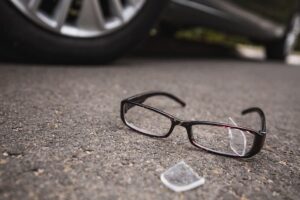When a negligent driver strikes a pedestrian, the impact may force the pedestrian onto the ground, causing them to suffer severe and sometimes fatal injuries.
Where do pedestrian accidents most often occur? Pedestrian accidents can happen anywhere that pedestrians are present, including by the side of the road, sidewalks, crosswalks, parking lots, and garages. Therefore, drivers must be especially vigilant in these areas to prevent serious accidents.
When an accident occurs and a pedestrian suffers injuries due to a driver’s negligence, the pedestrian may be eligible to recover compensation. As soon as possible after an accident, an injured pedestrian should follow up at a hospital emergency room or local urgent care facility for medical treatment. In addition, accident victims should contact an experienced pedestrian accident attorney in their area as soon as possible.
An attorney can meet with you to discuss the circumstances of your pedestrian accident, the injuries you suffered, and the medical treatment you received. Moreover, your lawyer can begin the claims-filing process on your behalf and negotiate a fair settlement offer with the insurance company adjuster.
Finally, suppose the insurance company will not offer you the appropriate damages you deserve for your pedestrian-accident injuries. In that case, your lawyer can file a lawsuit in court and litigate your case to a prompt conclusion.
Pedestrian accident attorneys do not represent big businesses and large insurance companies. Instead, they only represent accident victims who suffer severe injuries due to someone else’s recklessness.
Therefore, your Denver pedestrian accident lawyer will be on your side and will only advocate for your legal and financial interests. Your lawyer will do everything they can to maximize the monetary compensation and benefits you recover in your case—either through settlement or personal injury litigation in court.
Common Pedestrian Accident Causes
Pedestrian accidents routinely happen when drivers engage in careless, reckless, distracted, or driving while drunk. Drivers are responsible for following all road rules and operating their vehicles carefully and safely at all times. When they fail to do so, and a pedestrian accident happens, they and their insurance company may be responsible for damages. Some of the most common pedestrian accident causes include:
- Violating common laws: When drivers break the rules of the road, they significantly increase their chances of striking a pedestrian. This is especially true when they speed near traffic intersections, parking lots, or parking garages. Moreover, when drivers fail to yield the right-of-way to pedestrians at the appropriate locations, such as when a pedestrian is lawfully present at a crosswalk, they may cause severe accidents and injuries.
- Distracted driving: Given the large number of electronic devices that most drivers have in their vehicles, it is very easy for drivers to become distracted. A distracted driver does not observe the road. Some drivers become distracted when listening to loud music in their vehicles or when roughhousing with passengers in the backseat. At other times, electronic devices distract drivers from watching the road. For example, a driver might fiddle with a GPS device, cellular phone, or tablet instead of driving attentively. When a driver looks down or turns their head away from the road—even for just a second—that may be sufficient time for a pedestrian to appear out of nowhere. When a distracted driver negligently causes their vehicle to strike a pedestrian, the force of impact might cause the pedestrian to fall on the ground and suffer serious injuries.
- Intoxicated driving: Driving a vehicle while under the influence of alcohol or drugs is a grave offense and can subject offending drivers to both criminal and civil penalties. Alcohol intoxication is especially dangerous because it severely limits a driver’s ability to operate their vehicle carefully and prudently. Alcohol, as a depressant, slows down the central nervous system’s ability to function. Therefore, it may significantly delay a driver’s reaction time, preventing them from stopping their vehicle in time to avoid a pedestrian impact. It may also distort the driver’s vision, preventing them from even seeing a pedestrian in a crosswalk or on the side of the road. Passenger vehicle drivers are legally intoxicated if they have a blood alcohol concentration (BAC) of at least 0.08 percent. Commercial drivers, including tractor-trailer operators, must not drive with a BAC of 0.04 percent or higher. A 0.02 percent BAC cut-off applies to minors under 21 years of age. Even when a driver has a BAC that’s below the applicable legal limit, they may still experience the adverse effects of alcohol impairment, preventing them from driving safely and watching for pedestrians.
- Failing to use mirrors while driving: When operating a vehicle, drivers must also take care to use their rearview and side view mirrors. This is especially true while they are backing out of a parking space in a parking lot or parking garage. When a driver does not correctly adjust or use their mirrors prior to backing up, they may not see a pedestrian walking or running behind their vehicle, negligently striking them and causing them to suffer debilitating injuries.
If you suffered injuries in a pedestrian crash that resulted from one of these types of driver negligence, you have legal options you may consider. Your pedestrian accident attorney can explain these options to you in easy-to-understand terms and help you select the best course of action for your personal injury case. Your lawyer can help you file a claim with the insurance company adjuster, negotiate a favorable settlement, and, if necessary, litigate your case in court.
Common Pedestrian Accident Injuries
 When a car or truck strikes a pedestrian, it is always the pedestrian who suffers the more severe injuries in the crash. Unlike vehicle occupants, pedestrians do not have a metal outer shell or other covering surrounding them at the time of impact. Therefore, if a vehicle knocks a pedestrian to the ground—or onto a nearby vehicle, their body will strike the ground directly, and they may suffer serious injuries.
When a car or truck strikes a pedestrian, it is always the pedestrian who suffers the more severe injuries in the crash. Unlike vehicle occupants, pedestrians do not have a metal outer shell or other covering surrounding them at the time of impact. Therefore, if a vehicle knocks a pedestrian to the ground—or onto a nearby vehicle, their body will strike the ground directly, and they may suffer serious injuries.
The injuries that a pedestrian accident victim suffers typically depend upon how they strike the ground and the amount of force involved. For example, if a pedestrian merely scrapes the ground, they may suffer a road rash injury, cut, scrape, or abrasion. However, if they hit the ground forcefully, they may suffer a broken bone or soft tissue contusion.
Finally, if the pedestrian strikes their head, neck, or back on the ground, they may suffer a traumatic head and brain injury, spinal cord injury, paralysis injury, or even death in the most horrific accident scenario.
As soon as possible after your pedestrian accident, you should seek immediate medical treatment at your local hospital or urgent care facility. It is imperative that you seek this treatment on the date of your accident—even if you remain asymptomatic. Symptoms of many injuries, including head injuries and soft tissue contusions, may not appear until days or weeks after your accident.
Therefore, by seeking immediate medical attention, you ensure that your injury does not get any worse. Moreover, if you later file a personal injury claim, you show the insurance company adjuster that your injuries are serious—and that you made your medical treatment a top priority after your accident.
While you are still at the emergency care center, the medical provider on duty can physically examine you and order the necessary CAT scans, MRIs, and X-rays, to accurately determine your medical condition. The provider can also order the necessary treatment if you require treatment at the ER facility.
Finally, if your injuries require follow-up care, the provider can make the necessary recommendations. For example, after a severe accident, you may need to consult with your family doctor or treat with an orthopedic doctor or neurologist. If you have to undergo surgery, such as for a broken bone, you may need to attend physical therapy sessions later on down the road.
While you focus on recovering from your injuries, your lawyer will be busy at work on your personal injury claim. Your attorney can gather up your medical records and bills to date, as well as your lost wage documentation, injury photographs, police reports, and a victim impact statement. Once your treatment is complete, your lawyer can send these documents to the insurance company adjuster for review and begin the settlement negotiation process.
Legal Burden of Proof in Pedestrian Accident Claims
In a pedestrian accident claim or lawsuit, the accident victim has the sole legal burden of proof. The driver who caused the accident does not need to prove anything or satisfy any legal
burden in the case.
Specifically, the injured pedestrian must demonstrate that the at-fault driver’s negligence caused their accident, that they suffered injuries, and that their injuries directly resulted from the accident.
To establish this causal connection, it may become necessary for your lawyer to retain various experts. For example, your lawyer can retain an accident reconstructionist to speak with eyewitnesses, review police reports, and investigate the scene to determine precisely how the accident occurred. This may be necessary if the insurance company disputes fault for your pedestrian accident.
Moreover, your lawyer can retain a medical expert to causally connect your injuries to the accident or to establish that you suffered one or more permanent injuries. A permanent injury is unlikely to get better over time.
When you have an experienced pedestrian accident attorney on board in your case, you may rest assured that your lawyer will help you satisfy your legal burden and pursue the total amount of damages you deserve to recover for your injuries.
Potential Damages in Pedestrian Accident Cases
The damages that pedestrian accident victims may recover for their injuries usually depend upon various factors, including the extent of their injuries, the cost of their medical treatment, and whether they missed work time after their accident. Every pedestrian accident case is different, and some accident victims will recover more or less compensation than others. The venue where a pedestrian accident lawsuit is pending may also influence the settlement offer you receive from the insurance company.
In any case, your pedestrian accident attorney will aggressively advocate for you when negotiating a settlement offer with the at-fault party’s insurer. If the insurance company refuses to offer you fair damages, your lawyer can threaten litigation and, if necessary, file a lawsuit in court.
Potential damages you may recover for your pedestrian accident injuries include compensation for your:
- Lost wages
- Loss of earning capacity
- Medical expenses
- Physical pain and suffering
- Mental distress
- Loss of the ability to use a particular body part
- Loss of spousal companionship
- Loss of life enjoyment
Your lawyer can review the facts and circumstances of your injuries and medical treatment with you and determine which damages you can recover in your claim or lawsuit. Your lawyer will then set about maximizing your damages by highlighting your personal injury case’s strengths while downplaying any weaknesses.
Talk with an Experienced Pedestrian Accident Attorney Near You Today
If you suffered injuries in a pedestrian accident that resulted from another driver’s negligence, time is of the essence. Accident victims only have two years from their accident date to file a personal injury lawsuit in court. If they do not file their lawsuit within that two-year deadline, they waive their right to pursue and recover monetary damages for their injuries. If they later file a lawsuit with the court, the court will immediately dismiss it, effectively barring the accident victim from any monetary recovery.
Therefore, if you suffered injuries in a pedestrian crash, it is vital that you retain an experienced Denver personal injury lawyer to handle your case as soon as possible. Any time you interact with the legal system, do so with the help of a lawyer.
If the two-year statute of limitation is running close, your lawyer can file a lawsuit immediately and begin negotiating with the insurance company adjuster on your behalf. Alternatively, your lawyer can litigate your case through the court system to a favorable resolution at trial or binding arbitration.




















